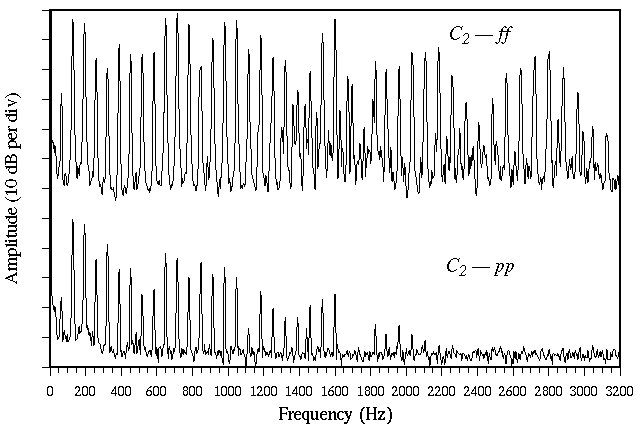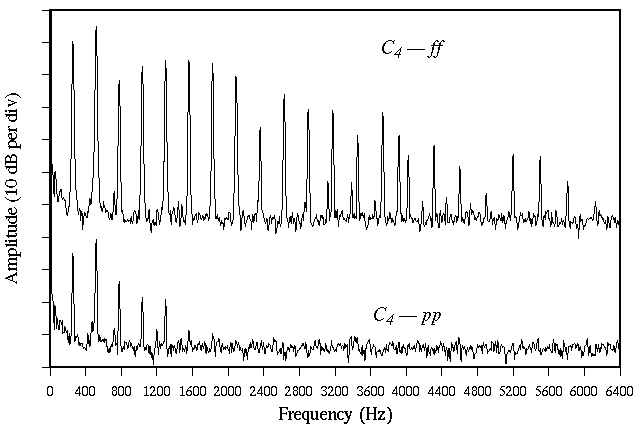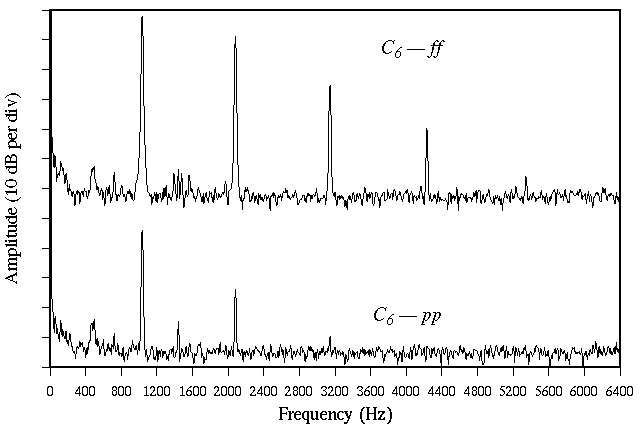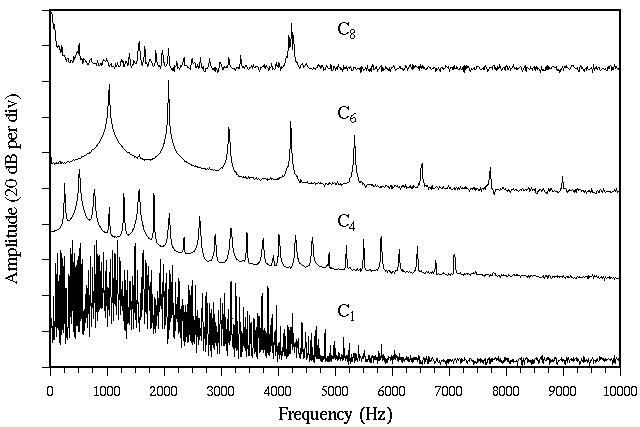| Hammer C2 | Hammer C4 | Hammer C6 |
|---|---|---|
 |
 |
 |
When a piano key is struck softly, the hammer hits the string at a slow velocity (and small force) and acts as a soft spring. The resulting piano sound spectra is dominated by the fundamental frequency of the string and a few higher harmonics. Soft notes often sound a little dull. On the other hand, when a piano key is struck with a heavy blow, the hammer hits the string with a fast velocity (and large force) and acts as a hard spring. The resulting string's frequency spectrum now contains many higher frequency harmonics and the sound is both louder and brighter.
This phenomena is shown below for hammers C2, C4, and C6 in a Yamaha grand piano. In all three cases the louder blow (ff) contains many more high frequency harmonics than does the softer blow (pp).
| Hammer C2 | Hammer C4 | Hammer C6 |
|---|---|---|
 |
 |
 |
If piano hammers were linear, then a loud blow would simply be an amplified soft blow. There would be no change in the tone quality (harmonic content) of the piano sound. This would sound quite boring (in fact it would sound like a poor quality synthesized piano sound).
In the bass region of the piano, the string spectra contain about 50-60 harmonics and extend out to about 5,000 Hz. In the middle region the string spectra contain about 20-30 harmonics and extend out to about 7,000 Hz. In the treble region the string spectra contain less than 10 harmonics and extend out to about 10,000 Hz. The highest couple of notes on the piano may only produce a fundamental and perhaps one harmonic. This trend means that bass notes sound rich and full (since many frequencies are being produced at the same time) while treble notes sound weak and thin.
The figure below compares string spectra measured for C1, C4, C6, and C8 hammers from a Yamaha grand.
| Compare spectra for ff blows for hammers C1, C4, C6, and C8 |
|---|
 |
The change in spectral harmonic content with register (from bass to treble) is a phenomena belonging to all musical instruments. This also makes realistic digital sampling and waveform synthesis of musical instruments a very difficult process.
 Back to the Piano Hammer page.
Back to the Piano Hammer page.